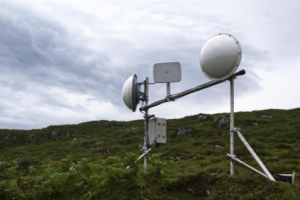Internet of Things and People for Everywhere
In remote and rural regions the last-mile problem has been the subject of much focus. Deployments show that high-quality access networks, driven by community, can be built in otherwise under-serviced regions. Though remote access research is far from complete, the next question is increasingly clear: What `backhaul’ options exist for isolated networks to interconnect with the rest of the Internet? Current engineering and economics favour urban regions and are prohibitive.
Co-founding HUBS c.i.c. provided the opportunity to design and deploy real-world systems. HUBS currently serves 1000+ premises across thousands of square kilometers, and is growing. The engineering opportunities are multi-dimensional. For example, there exists an immediate need to design and deploy architectures to enable economies of scale [1]. Many technical challenges exist. So do problems that are multi-disciplinary, with economic and social science dimensions. I would also engaged with creative and urban designers to investigate additional `community-oriented’ uses or aesthetics for infrastructure.
In many regions, the closest available broadband connections are slow and unreliable in the form of copper-based DSL. One challenge is to aggregate multiple low-capacity and geographically dispersed connections into a single high capacity connection. Aggregation, by definition, is a routing service, that assumes individual channels are identically characterised and co-located. This presents an opportunity to build higher-level services [2].
[1] W. Waites, J. Sweet, R. Baig, P. Buneman, M. Fayed, G. Hughes, M. Fourman and R. Simmons. “RemIX: A Distributed Internet Exchange for Remote Access Networks,” in ACM SIGCOMM GAIA Workshop, 2016.
[2] L. Boccassi, M. Fayed, and M. Marina. “Binder: A System for Aggregation of Internet Gateways for Community Networks,” un ACM Mobicom
LCDNet Workshop, 2013.
Contact

